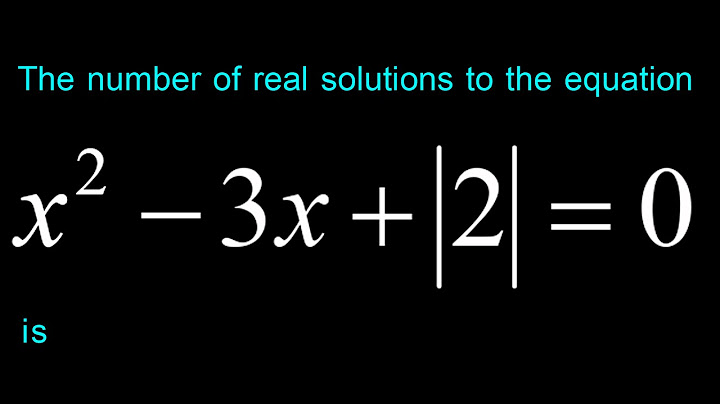The absolute minimum and maximum of a function are studied using graphs and examples with detailed solutions. Graphical solutions to the examples are also presented for deep understanding of the absolute minimum and maximum of a given function. Show Review of Absolute Minimum and Maximum of a FunctionDefinition: Values of \( x \) in the domain of function \( f \) at which \( f '(x) = 0 \) or \( f '(x) \) is undefined are called critical points of function \( f \). Theorem:For a continous function on a closed interval \( [a,b] \), there always exist values \( x_1 \) and \( x_2\) in \( [a,b] \) such that \( f(x_1) = m \) is an absolute minimum and \( f(x_2) = M \) is an absolute maximum or \( m \le f(x) \le \ M \) for every \( x \in [a,b] \). Examples on absolute maximum and minimum of functions in different situations are discussed graphically. Example 1 Absolute minimum and maximum at stationary points Example 2 Absolute minimum and maximum at points where the first derivative is undefined Example 3 Absolute minimum and maximum at end points Examples with Detailed SolutionsHow to find absolute minimum and absolute maximum of a function \( f \):
Example 4 Step - 1: Find the first derivative of \( f \) Example 5 Step - 1: Find the first derivative of the given function \( f \) Example 6 Step - 1: Find the
first derivative of \( f \) Example 7 Step - 1: Find the first derivative of \( f \) Find zeros by setting numerator equal to zero: \( (x^2-2x-3)(2x-2) -
|x^2-2x-3| = 0 \) equation (1) \( x^2-2x-3 < 0 \), \( |x^2-2x-3| = - (x^2-2x-3) \) and equation (1) may be written as \( x^2-2x-3 > 0 \), \( |x^2-2x-3| = (x^2-2x-3) \) and equation (1) may be written as \( f'(x) = 0\) \( x = 1/2 \): Numerator: \( (x^2-2x-3)(2x-2) - |x^2-2x-3| = ((1/2)^2-2(1/2)-3)(2(1/2)-2) - |(1/2)^2-2(1/2)-3| = 0 \) \( x = 3/2 \): Numerator: \( (x^2-2x-3)(2x-2) - |x^2-2x-3| = ((3/2)^2-2(3/2)-3)(2(3/2)-2) - |(3/2)^2-2(3/2)-3| = -15/2 \)
Function \( f \) has three critical points: \( x = 1/2 \) is a zero of \( f'(x) \) and \( x = -1\) and \( x = 3 \) are values of \( x \) for which \( f'(x) \) is undefined. Example 8 Step - 1: Find the first
derivative of \( f \) More References and LinksCritical Numbers of a Function |

Related Posts
Advertising
LATEST NEWS
Advertising
Populer
Advertising
About

Copyright © 2024 membukakan Inc.


















